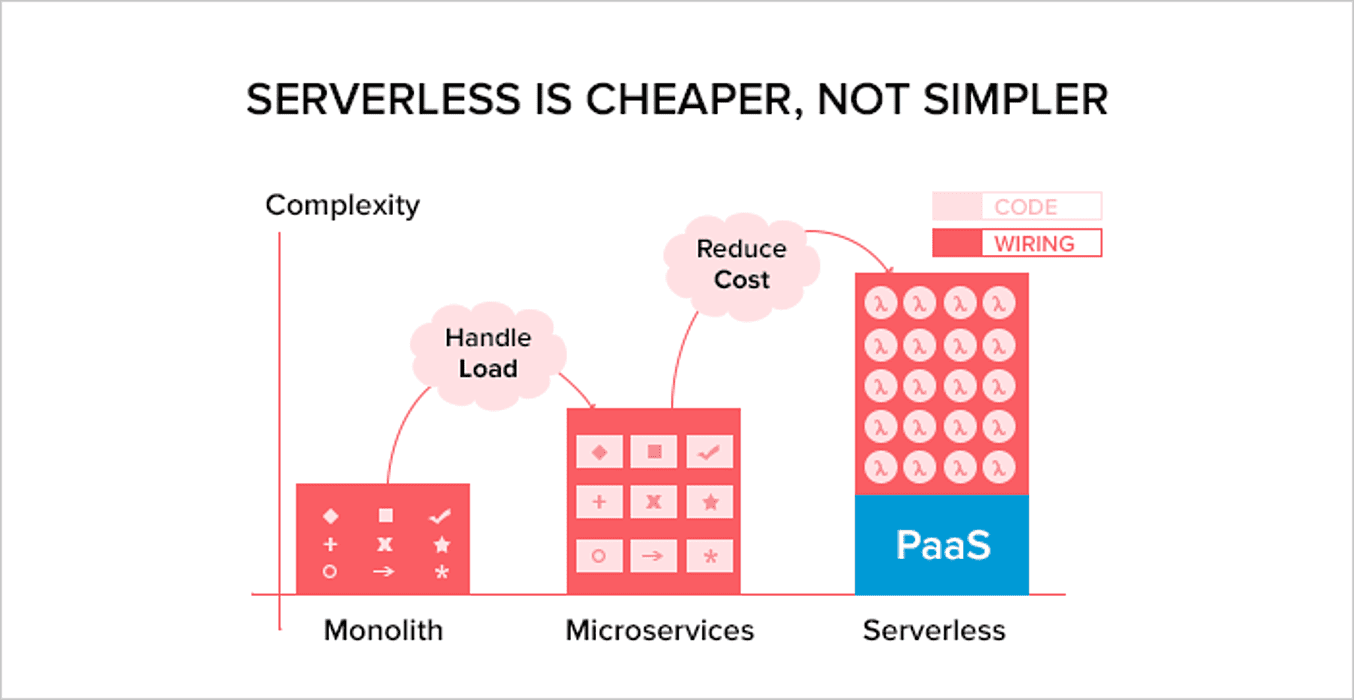
The two factors that determine an app’s user experience are its performance and the user interface. Even though the UI design is the forte of app designers, the performance is heavily dependent on the server architecture on which the app runs.
For a long time, the installation and maintenance of the server on which the app runs have been the responsibility of the app company. However, a new paradigm called infrastructure as a service has emerged, which is revolutionizing the traditional methods.
Examples of companies offering serverless architecture services include Microsoft, Amazon Web Services, Salesforce, IBM, Google, SAP, Oracle, Workday, ServiceNow, and VMware. This list is inconclusive and there are many more providers.
What is Serverless Architecture?
This is where cloud service providers build servers on behalf of companies and giving access to these servers via the internet. The problem is that even with access to these servers, companies have had to provision, scale and manage the servers, which requires a lot of time, money, and resources.
In an effort to eliminate this overhead and build a platform to help manage the servers, AWS Lambda was released by Amazon Web Services in 2014. This changed the way server management is done forever, by introducing a serverless framework on which to deploy mobile, web, and IoT applications.
When we say “serverless”, we do not mean that the app does not run on an actual server, The server must exist for the app to run. What “serverless” means is that it takes away the responsibility of managing the server from your hands and puts it in the service provider.
Now, you can focus on writing the code and deploying features, rather than worrying about the underlying infrastructure.

Why Serverless Architecture is Important for Deployment Process?
The serverless framework can be considered as a Function as a Service cloud computing model. What you need to do is to upload your production code to the server that is already running. You don’t have to manage or configure it.
The application code is divided into smaller sections, and each of these lives in a container. In the event of an incoming request, the containers are triggered resulting in an immediate response to the request.
Speeding up the deployment process is just one of the reasons why you should consider the serverless deployment. There are other reasons that show why going serverless is an amazing idea. In the following section, we look at some of the advantages of architecture.
Reason 1: No Server Administration
Administering a server requires a lot of time and resources. You need to keep an eye on server activities to ensure that resources are available to fulfill requests. You also need to check server security and make sure that the loads are well-managed. What’s more, server administration is a full-time job, which ensures that the servers are always working without fail.
With serverless technology, you do not need server administration. It is the service provider’s role to ensure that the servers are running smoothly and are available at all times. This allows the developers to improve their app’s user experience and design.
Reason 2: On-Demand Scaling
When using dedicated servers, it is your job to make sure that they can manage loads and scale resources. This is a full-time job that deducts time that would have been dedicated to improving your app.

The serverless architecture enables you can scale your resources on demand. In case your app gets a massive increase in the number of users, the server automatically scales resources to ensure that all requests are handled properly.
This is different from dedicated servers, which when your application is running below capacity, you pay for resources that sit there idly. On the other hand, a serverless architecture allows you to scale your resources at runtime, meaning that you only pay for what you need.
Reason 3: Fault Tolerance and High Availability
One problem that dedicated servers face is that you have to ensure that the server is still running even when a component fails to respond. The serverless framework handles these problems without any performance latency. This is achieved by distributing redundant server nodes across a region known as the Availability Zones (AZ).
These nodes ensure that your server is continuously available. Besides, these nodes are separate from each other, which increases their fault tolerance levels. This increases server availability while decreasing the latency.
Reason 4: Low Cost of Deployment and Management
After you go with a cloud-hosted server, your infrastructure costs are bound to reduce dramatically. Nonetheless, you still have to pay a fixed price for the servers, even if your apps are not consuming the resources.
With a serverless architecture, however, you can easily plan resource utilization, which will save your operational costs in two ways:
First, there is no need to hire additional staff to manage the servers; The service provider takes care of this role. As such, this reduces your staff costs. Second, you are only charged for the time your code runs on the server, which eliminates any extra cost.

Let’s say that your eCommerce app gets a huge rise in traffic over the weekends, but low traffic on weekdays. This means that you only pay for the traffic your app receives, unlike the fixed price servers where you pay for capacity even when not using them.
Reason 5: You Focus on Your App’s Experience
Many studies point out that developers use as much as 40% of their time dealing with backend and infrastructural issues. This can be changed with serverless architecture, which frees developers from dealing with server management. With the extra time, the developer can focus on developing the app to meet the user’s needs.
Additionally, this gives app developers the peace of mind they need to build an amazing user experience.
Conclusion
This article has pointed out five top reasons why you should consider serverless architecture for full-stack development: no server administration, on-demand scaling, fault tolerance, and high availability, low management and deployment cost, and a greater focus on new app features and user experience.
Serverless architecture is the future because it is a win-win for both the app developers and the company offering the ease of serverless applications. The app engineers focus on the app and the user experience while the service provider can rent out their excess capacity.















